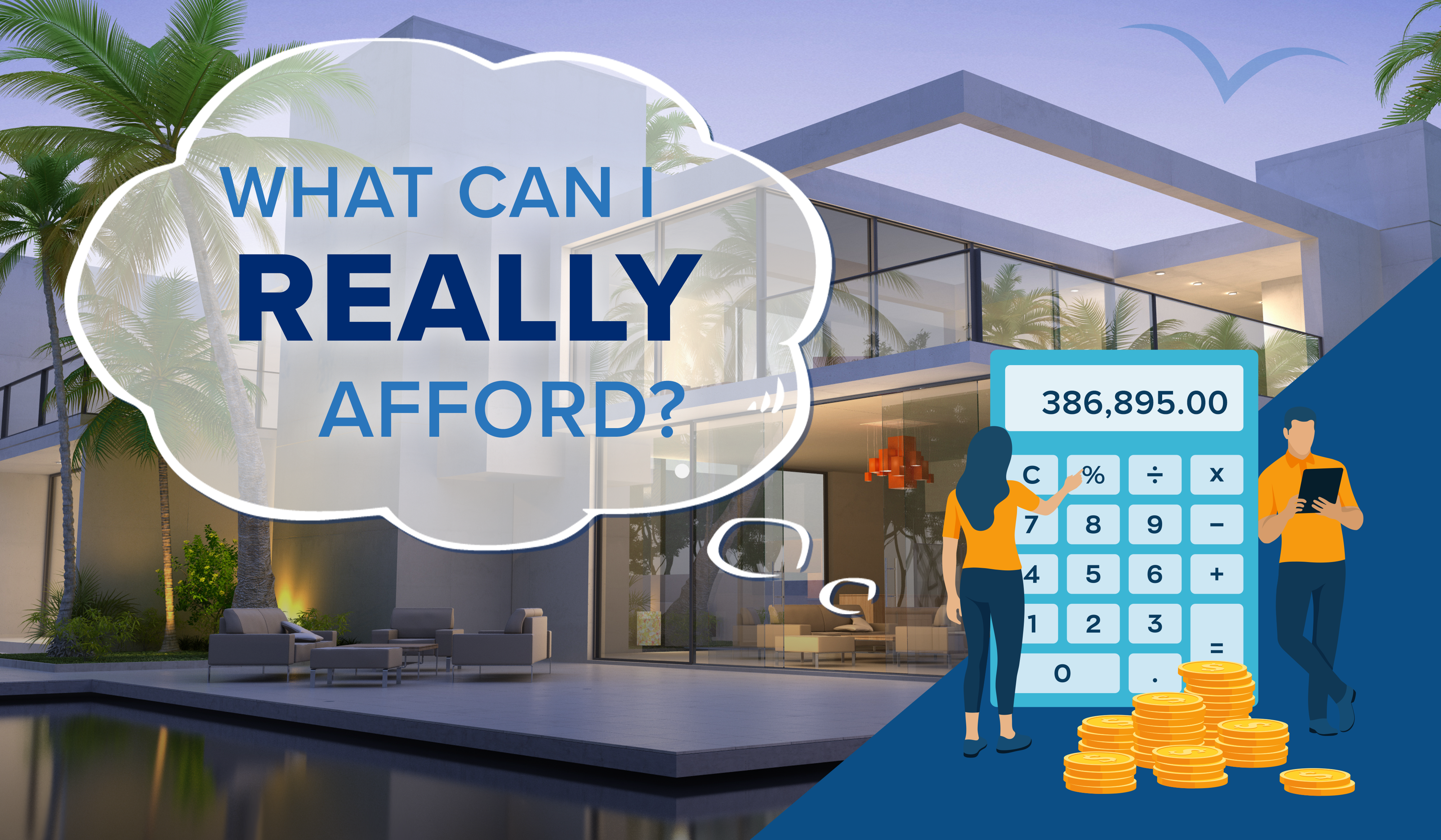Before you even sit down with a mortgage lender to find out how much of a loan you qualify for - anxiety is already starting to bubble up. All kinds of stories begin to build in your mind.
"What if they tell me I qualify for some big, ridiculous loan amount with a string of zeros? How will I afford to make the payments on a big loan?"
We see this kind of anxiety with homebuyers all the time. More often than not - there's a big difference between the two numbers. And - we have some advice to share with you: what you qualify for doesn't necessarily equal what you can afford.
So before you dive into the deep end of the worry pool, please take a few minutes to read our advice in this article.
THE LENDER'S PERSPECTIVE
It's important to understand the difference between calculating a loan amount you can afford and the qualifying process lenders go through. Let's start by looking at the lenders' side of the equation.
You may know that lenders use established criteria to determine if an individual is a reasonable risk to loan their money to - and how much money they'll risk. These established criteria are called "underwriting guidelines."
Underwriting guidelines take the lender through a rigorous assessment that includes reviewing current income, job history, total debt, monthly payments, and credit history. Their one goal is to make sure a potential borrower can pay back the loan as agreed.
Lenders are in the business of lending money that they can be reasonably sure will be paid back. Looking at your history of paying bills on time and earning a living are vital clues. The more history you have to show, the easier it is for a lender to decide if you're a reasonable risk.
They Want To Loan You How Much?
It bears repeating that lenders apply their underwriting guidelines to determine the amount a potential borrower will qualify to borrow. They use a specific calculation, starting with your gross monthly income (for self-employed borrowers and those with a W-2 job.)
"Gross monthly income" means the amount you earn before income taxes are deducted.
Next, the lender reviews your monthly debt. They add together the minimum monthly payment amount for all revolving debt (think credit cards) and monthly installment payments (like car loans and student loans.)
Then, the lender calculates an estimated mortgage payment, called the "PITI." It includes a monthly principal and interest payment (P and I), one month of property taxes (T), and one month of hazard insurance premium (that last I). An approximate mortgage amount and home purchase price are used in the calculation.
The lender then divides the PITI by your gross monthly income (called the front-end ratio.) They add the PITI to your other monthly debt and divide that total by your gross monthly income (called the back-end ratio.)
While there are maximum percentages allowed for both these calculations, multiple underwriting factors impact the final decision.
The front-end ratio should be a maximum of 38% of your gross monthly income. In general, the back-end ratio can be up to 45% of your gross monthly income. Since these percentages are not applicable in every case, schedule a consultation with a Point Equity Loan Officer to learn your ratios.
Does spending 45% of your monthly income on a mortgage PITI sound scary to you? Then you need to step back and look at your income and expense numbers in a way that focuses on YOUR financial health.
Remember, lenders, analyze your application to see if they're comfortable lending you a large sum of money. They aren't acting as a Financial Coach, helping you put together a plan that covers all of your financial goals.
That's where you come in.
HOW MUCH HOUSE CAN YOU AFFORD?
Learning what mortgage amount you qualify for is an essential part of the home buying process. However, it doesn't tell you what you can afford. Lenders want you to pay your mortgage. But you have financial goals and concerns far beyond a mortgage payment.
Everyone's financial situation is unique. You may have monthly obligations that include:
- Medical expenses
- Child care costs
- Insurance costs
- Tuition payments
- And good things, like saving for travel, hobbies, retirement, holiday gifts, etc.
Your financial goals have likely been focused on saving to purchase a home. You balanced your other financial obligations to make that happen. Once you're a homeowner, those financial obligations still need to be met - while you continue to save money. So, you're going to need a plan.
Do You Budget?
Not everyone uses a formal budget - or even likes them. But, at the very least, everyone needs to know their monthly net income and financial obligations. Notice how we said "monthly net income?" Yep - your budget starts with the cash you have leftover AFTER taxes, so hold that thought for a minute.
Taking on the responsibility of a home and a mortgage is next-level adulting. If you've never liked or set up a budget before - it's time to start because a budget is the best way to determine how much of a mortgage you can afford.
Make sure to set up a realistic budget, one you can live with day-to-day. Start by listing all of your expenses, minus rent, utilities, and the amount you've been saving for a down payment. Saving money will continue after you buy a home, but it may not be as large a portion of your net income from now on.
Don't forget to include a plan for paying off all installments and revolving debt. A budget highlights the amount of money going to pay your debts every month. Without the monthly debt payments, it's easy to see how your mortgage affordability increases.
How a Mortgage Changes Net Income
Now, back to the discussion about your net income. We aren't going to give you income tax planning advice in this article. However, we recommend (and encourage) you to meet with a tax professional as part of your affordability analysis.
Why do we recommend you meet with a tax professional? The mortgage interest and property tax you pay will potentially reduce the amount of income tax you owe. To assess the reduction amount - you need a professional.
You can get a very rough estimate with a paystub by navigating toIRS.gov and searching for the Withholding Calculator. Just follow the prompts on the website step by step.
Once you have an estimate of your potential monthly net income, plug that into your budget. Now you're getting close to coming up with your affordability number. But the final step is best accomplished by meeting with a loan officer.
Armed with the budget you've created, your initial meeting with a loan officer will provide you with the remaining pieces of your affordability puzzle. They will combine your down payment, estimated closing costs, and, if applicable, mortgage insurance costs.
The loan officer will calculate the potential PITI - the last piece of your affordability calculation. With that number plugged into your budget, you can adjust the purchase price and know that the home you buy is a home you can afford.








